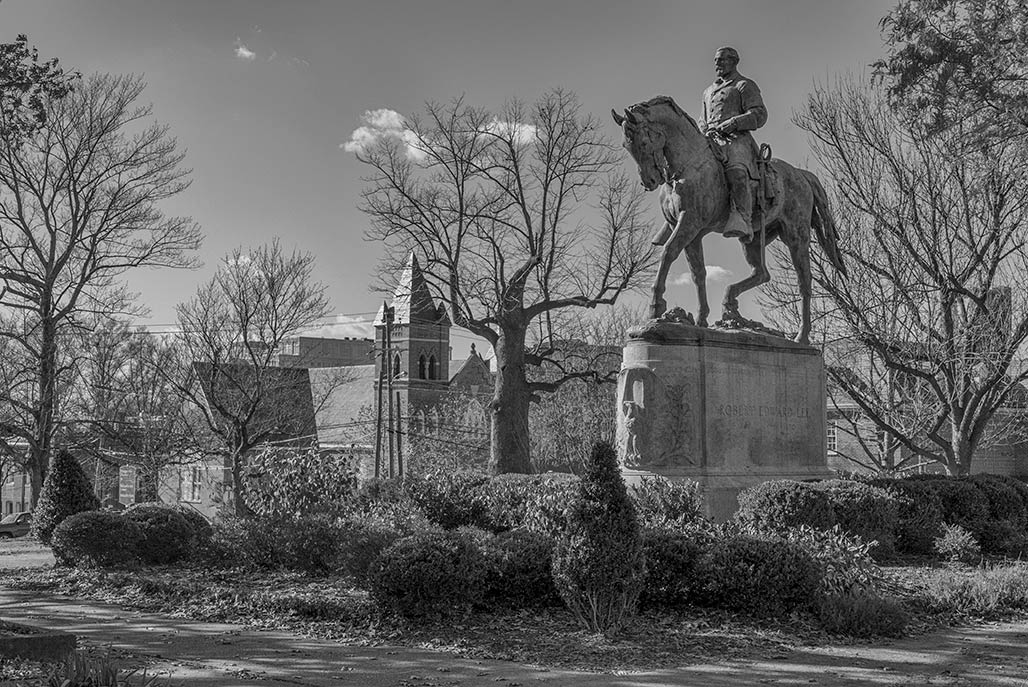
sense of place

photography from the Chesapeake Bay watershed by Bill Emory

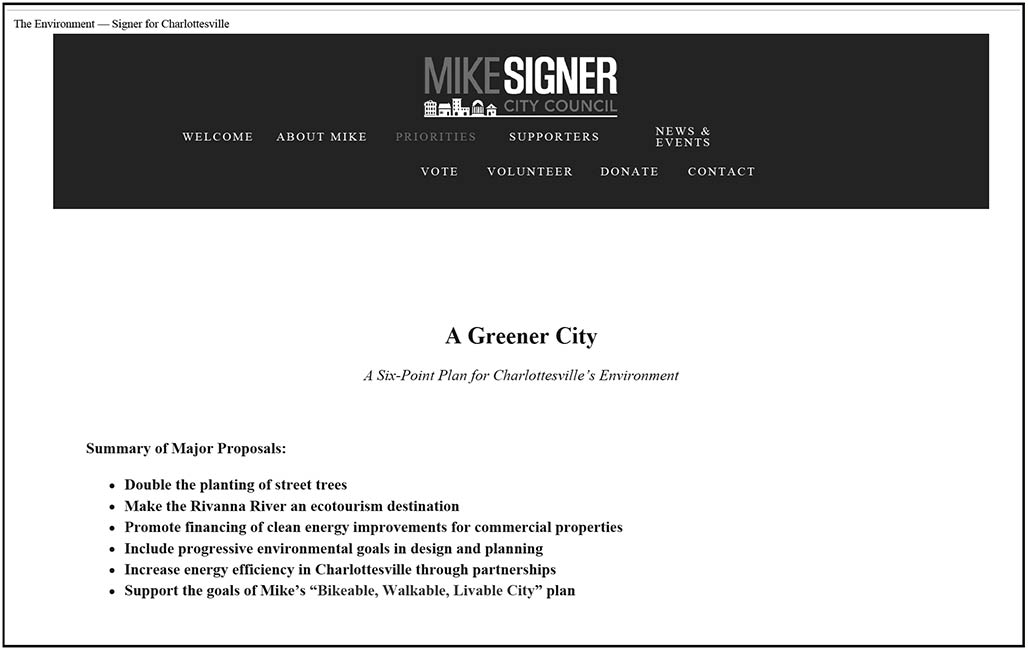
The 2018 CIP proposal in front of us now includes $50,000 per year for the Urban Tree Preservation and Planting line item. This represents a 60% reduction in Parks & Rec original request for $125,000 to perform this work. The original request was carefully considered with input from the Tree Commission. This line item must cover maintenance and preservation of city owned trees that includes: 1) treatments for Emerald Ash Borer and Dutch Elm Disease (estimated at $20K); 2) structural pruning and arboreal maintenance of downtown mall trees and Corner trees (estimated at $25K); and, 3) arboreal maintenance of other city trees in parks, road right-of-ways, schools, etc. (estimated at $30K). Proactively maintaining and preserving the City’s existing trees alone will cost $25,000 MORE than this CIP’s total amount. Needless to say, there will be no funds available for planting new trees or replacing trees that are removed due to storm damage or age.
This news is especially disturbing coming on the heels of last year’s Tree Canopy Study which found that Charlottesville experienced a canopy loss of 6.2% (roughly 420 acres) over the past ten years.
Parks & Rec was able to offset insufficient funding for City trees in recent years with the infusion of VDOT funding for the parkway and route 29 projects. That funding is now gone. The 2013 Comprehensive Plan’s goal to “expand and protect the overall tree canopy of the City” cannot be achieved with the currently proposed CIP funding level. To simply maintain the City’s current trees will require about $75,000. To meet Tree Commission recommendations to plant 200 new trees per year, at a cost of about $50,000, will require a total CIP funding level of $125,000. I urge the Planning Commission and City Council to increase the Urban Tree Preservation and Planting CIP line item to $125,000. To accept the proposed, much reduced CIP funding level is to knowingly decrease protection and maintenance of the City’s existing trees and totally eliminate the planting of new trees. The City’s tree canopy will continue to decline along with the health and financial benefits it provides to our community.
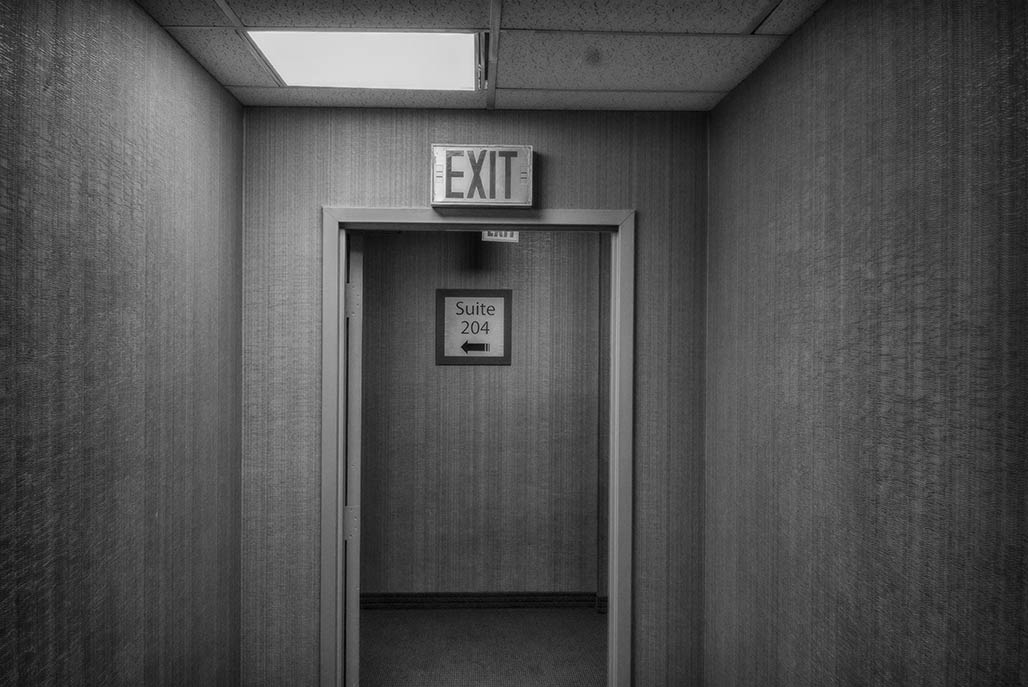
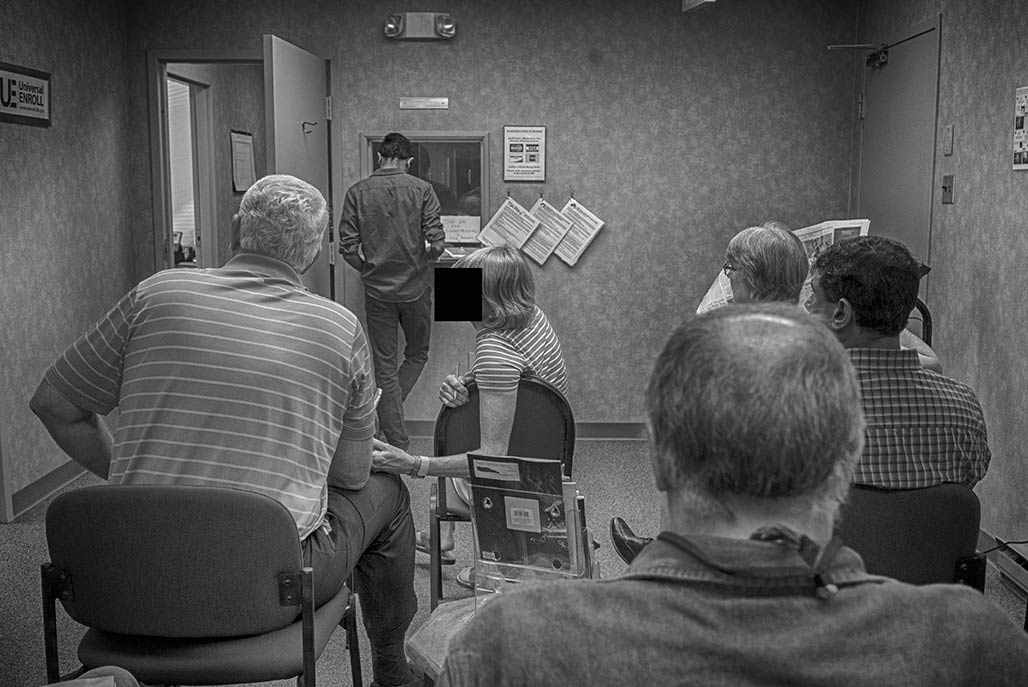
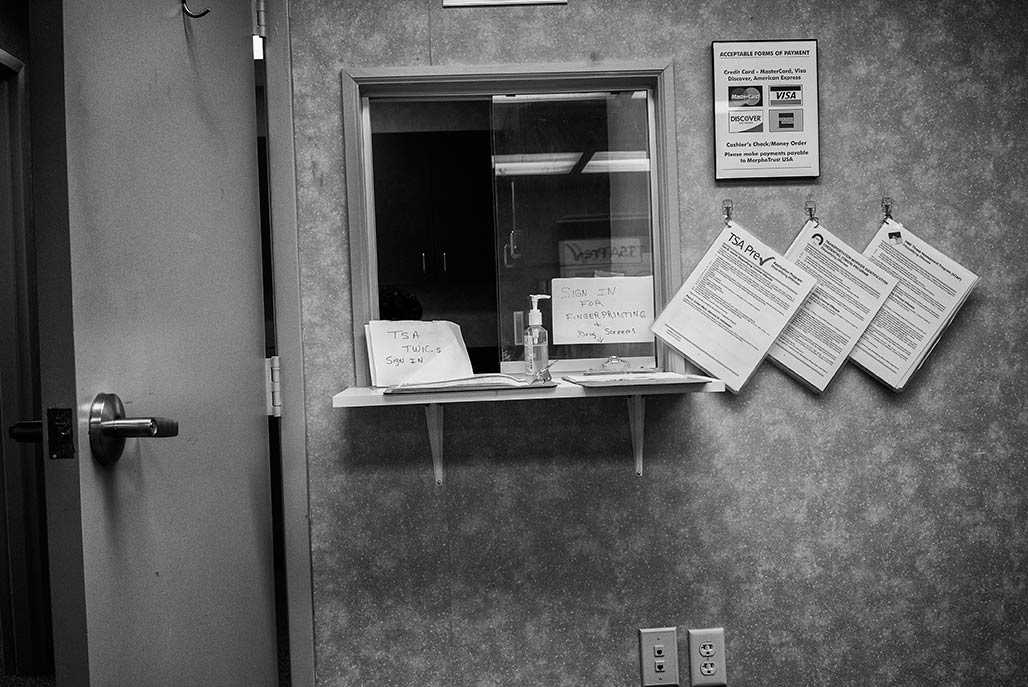
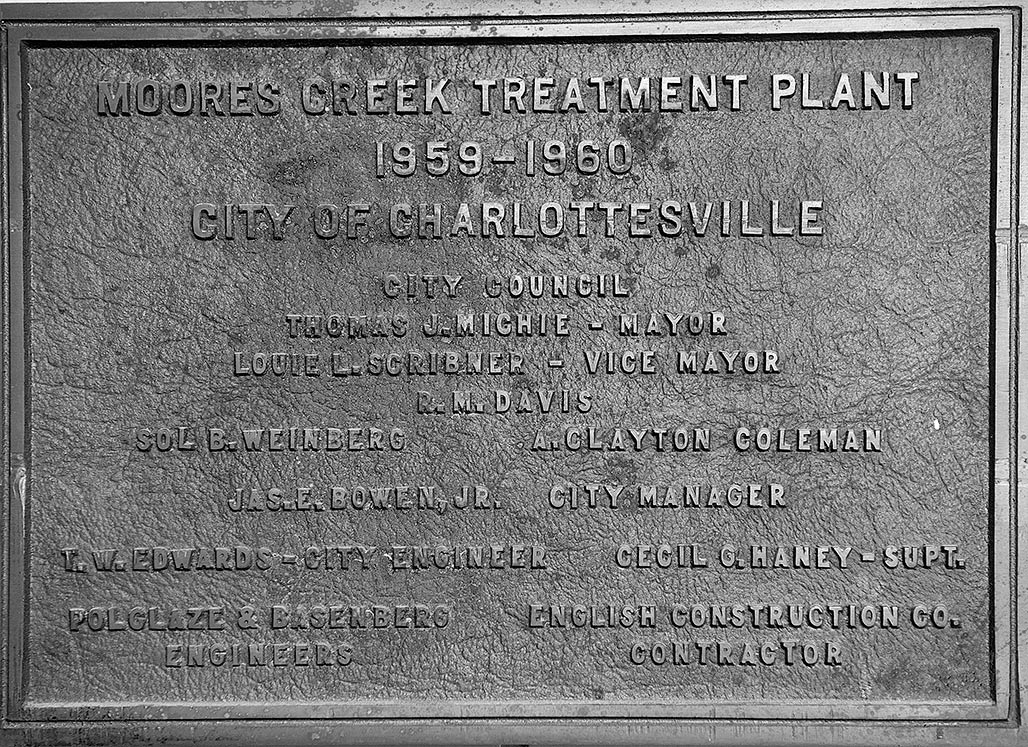
RESOLVED THAT JAMES E BOWEN JR., CITY MANAGER OF THE CITY OF CHARLOTTESVILLE VIRGINIA BE AND HE IS HEREBY AUTHORIZED AND DIRECTED TO EXECUTE ON BEHALF OF THE CITY OF CHARLOTTESVILLE SAID APPLICATION FOR FEDERAL GRANT FOR SEWAGE TREATMENT WORKS
UNDER U. S. C. 466 ET SEQ. IT BEING THE AGREEMENT OF THE CITY OF CHARLOTTESVILLE THAT IF A FEDERAL GRANT FOR THE PROJECT IS MADE PURSUANT TO THE FEDERAL WATER POLLUTION CONTROL ACT (33 U. S. C. 466 ET SEQ.), THE CITY OF CHARLOTTESVILLE WILL PAY THE REMAINING COST OF THE APPROVED PROJECT; AND THAT THE CITY OF CHARLOTTESVILLE WILL PROVIDE PROPER AND EFFICIENT OPERATION AND MAINTENANCE OF THE APPROVED PROJECT AFTER COMPLETION OF CONSTRUCTION THEREOF.
MR. DAVID J. WOOD JR. ADDRESSED THE COUNCIL AND PRESENTED THE WORKABLE PROGRAM FOR URBAN RENEWAL AS PREPARED BY HARLAND BARTHOLOMEW AND ASSOCIATES. ON MOTION BY MR. WEINBERG, SECONDED BY MR. MICHIE, THE MAYOR WAS AUTHORIZED TO EXECUTE THE LETTER OF TRANSMITTAL TO THE HOUSING AND HOME FINANCE AGENCY.
–Charlottesville City Council Minutes, January 6, 1958
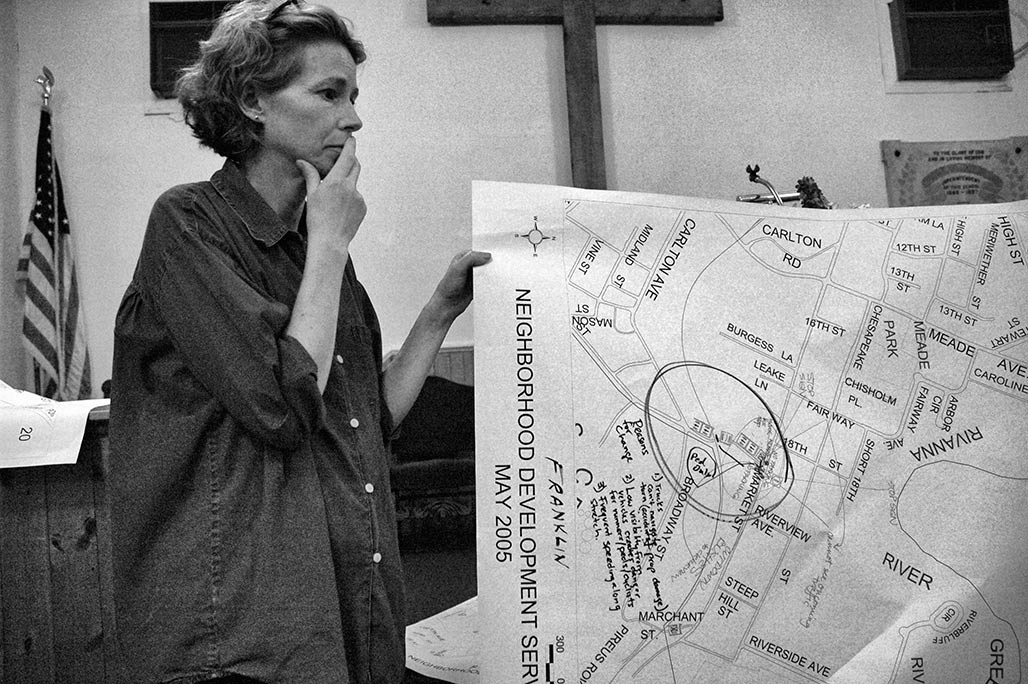
Ms. Szakos moved to approve a six month pilot from Market St. to the driveway of the existing business with appropriate signage, conduct a traffic study, and engage citizens and businesses. Ms. Galvin seconded, with the addition of a clearly marked pedestrian pathway. Ms. Smith said we should be sure we give adequate notice to the neighborhoods. The resolution passed. (Ayes: Ms. Szakos, Ms. Smith, Mr. Huja, Mr. Fenwick, Ms. Galvin; Noes: None.)
Never happened.
Since that time the Bike-Ped master plan revision has been recommended for approval by the Planning Commission. County and City meet to discuss the Rivanna corridor and planning issues along their joint boundary.
Last night as part of its consent agenda Council approved funds for a sidewalk on Franklin.
The Code audit, Standards and Design Manual revisions, the Streets That Work initiative, these hopeful initiatives seem to be MIA.
The new director of Neighborhood Development has a very full plate.
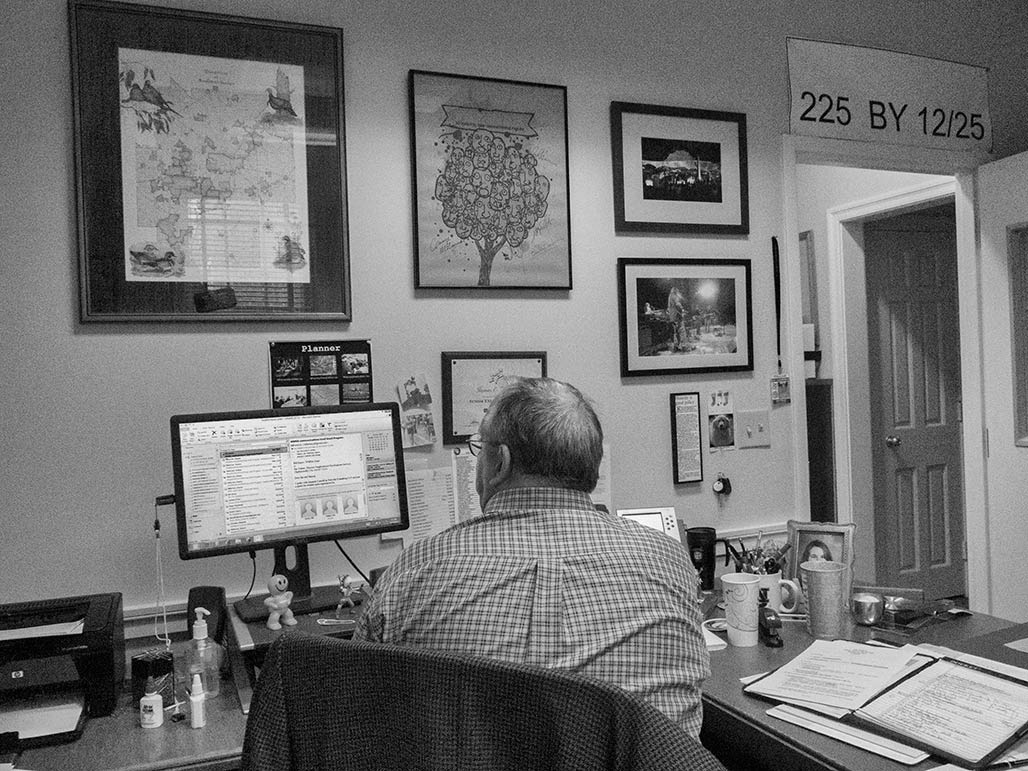
Jim has been in charge of the department that oversees the fate of neighborhoods so we’ve had much contact over the years.
His is a critically important, tough position which he has handled with grace and good humor. I will miss him.
Jim’s last official words to me were encouraging, about getting long standing zoning issues rectified. That work now falls to his successor.
Following Mr. Tolbert’s departure I hope we can find an owner’s manual for the City.

The city, sixth-largest in the state with a 2010 population of 93,853, wanted to separate itself from what it saw
as wasteful government spending in surrounding communities. The city benefits greatly, though, from the number of Fortune 500
companies headquartered there, boasting an extremely high per capita income, with the median family household income,
according to a 2008 census estimate, approximated at $129,810, and the average family income $169,815.–Huffington Post
Sandy Springs, Mr.Tolbert’s new town, has a considerably different socio-economic profile and governmental services structure than Charlottesville.
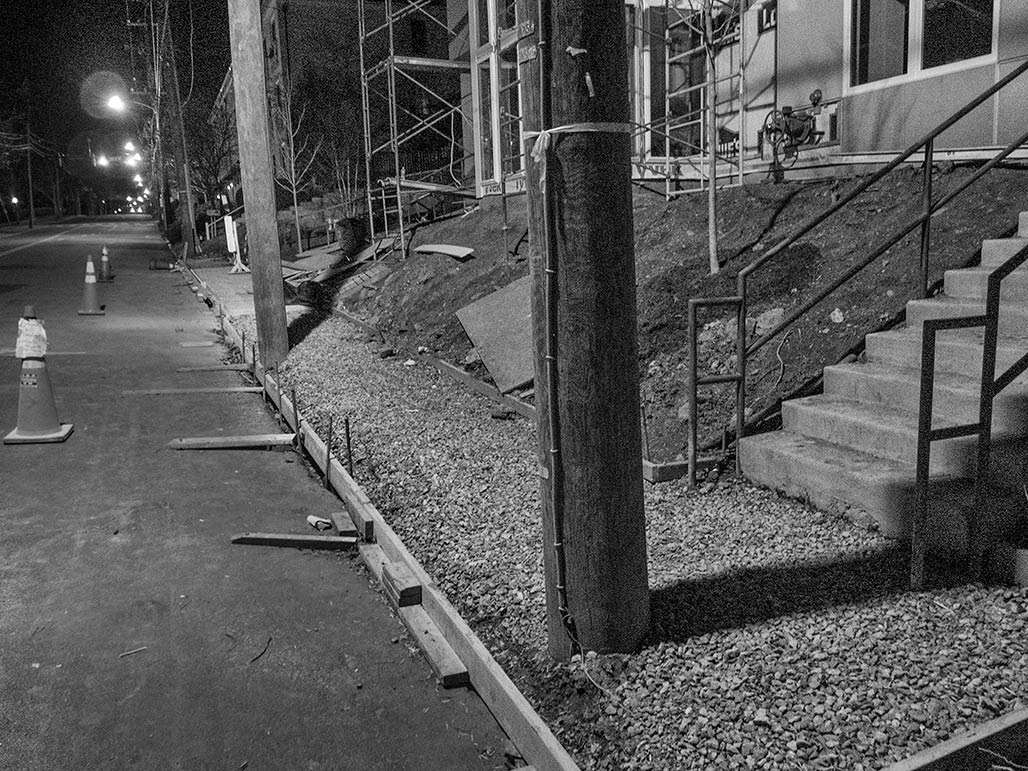
In November I heard that Dominion Power (aka Dom.Com, VEPCO, Dominion) had indicated to a Charlottesville City Councilor that utility poles located in the middle of sidewalks could be addressed. Dominion was interested in a list, an inventory of such poles.
HEY Dominion! Are these two more sidewalk poles in the making? 1000 block of East Market Street.
Decrease the width of the street to 36 feet, keep the sidewalk, move the poles?
Put the lines in an underground utility bus?
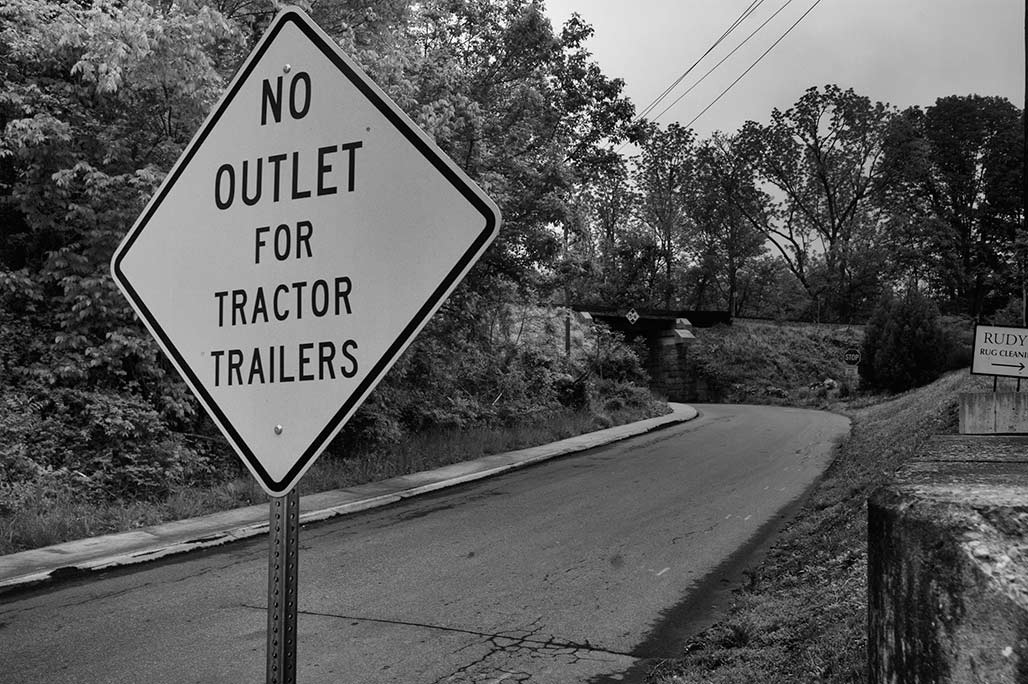
Franklin and Broadway. The sign is advisory in nature, not a sign that the police enforce.
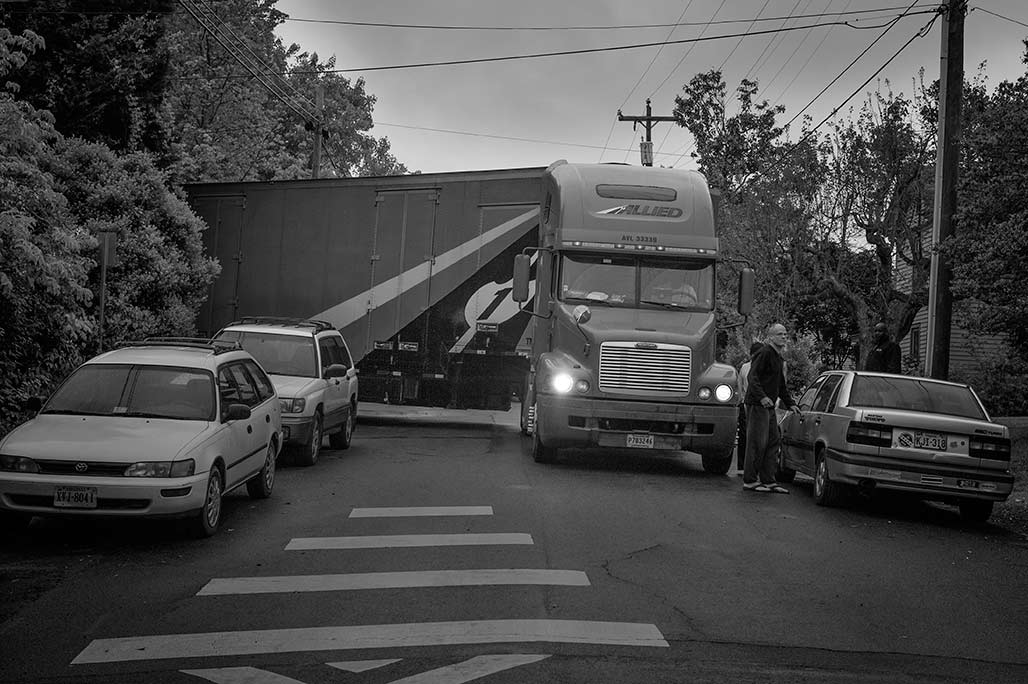
And so…. Franklin and Market. The tractor trailer driver mashes Betty Lou’s front lawn, knocks on doors. Residents on Market Street move their autos so the rig can make the turn he has been advised not to make.